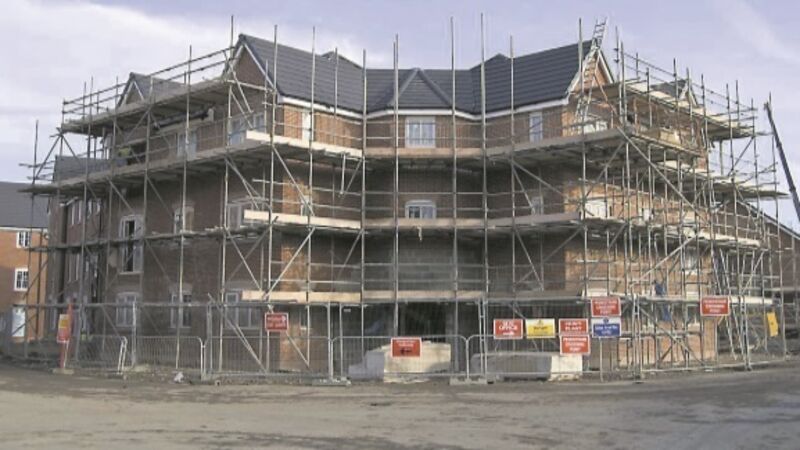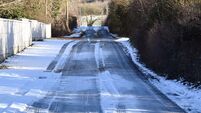Dear Sir... Readers' Views (10/01/17)

Housing issue harmed by bad figures
One of the biggest obstacles in trying to address the housing crisis is the lack of reliable data. Census 2016 raised several questions in this regard.
Central Statistics Office (CSO) figures from the Department of Housing state there were 50,951 homes completed between 2011 and 2016.
However, the actual number of new households recorded in the census was just 18,981. This can be partly explained by obsolescence, a natural rate of decline in existing building stock (estimated at around 0.3%, 3,500 per annum).
Experts point to the ‘ESB” effect: The Department of Housing have opted to count completions based on new ESB meter connections.
The Society of Chartered Surveyors Ireland estimate that this could be over-counting by 20% (each new meter,) sub-division of existing homes, granny flats and a significant proportion of refurbishments.
Since the introduction of the centralised Building Control Management System (BCMS) in 2014, most building completions were recorded on an easily read and accurate database.
However, this system was adjusted in September 2015 with the introduction of SI.365, an opt-out for once-off dwellings and refurbishments and to include local authority buildings.
Completion certificates are no longer required for once-off homes.
As a result, the overall number of house completions cannot be accurately assessed from the BCMS. We created an excellent database to record house completions in 2014 only to undo its usefulness in 2015.
The alternative indicator to the number of homes under construction is to examine the number of Commencement Notices for planned construction site start dates.
The BCMS logs building commencements nationwide since 2014.
However, in larger multi-unit schemes the practice is to lodge one commencement notice for an entire scheme or phases of a scheme which may not be completed for several years.
The Department of Housing claims we have ‘completed’ almost 15,000 new homes in 2016 and we are on track to ‘complete’ 19,000 this year.
Representatives of the Construction Industry Federation predicted an annual completion level of just 8,000 at a housing conference late in 2016.
According to the CSO the total number of stamp duty transactions, new homes purchased in 10 months of 2016, was just 3,418 and registrations for new house guarantee schemes were just 4,500 for the first 10 months of 2016.
In 2015 over 40% of homes were once-off dwellings, and local authorities built less than 200 homes in the last two years.
So the likely maximum number of actual homes built in 2016 may well match with the CIF’s prediction of 8,000, significantly at odds with official estimates from the Department of Housing.
But it gets worse.
The rental sector and numbers of tenants renting may also be under-inflated due to measurement methodology.
It also seems the Central Statistics Office in Ireland do not count the number of people who own homes but the proportion of properties owned by an occupier.
Three separate unrelated adults sharing a house are counted as one rented household.
One owner living in their own home with two student lodgers is counted as one owner occupied home, and the lodgers are not counted.
So, policy and management of the housing sector is based on flawed information- commencements are incorrect, completions are not accurate, obsolescence has been ignored, our assessment of the owner-occupier mix is flawed.
How can we manage housing if we can’t even quantify it correctly?
Refugees can’t just be landed anywhere
As someone who grew up in Ballaghaderreen I have been following the debate on the decision to house 80 Syrian refugees in the recently renovated and only hotel in the town, the Abbeyfield.
Like most things in life, they are rarely black and white and it is unfair to label objectors to this proposal as racist.
Ballaghaderreen is a small country town in Co. Roscommon close to the Mayo border with a population of roughly 2,000 people, much less if you are referring to the town itself.
In fact it’s GAA football team plays in the Mayo league, something dating back to the late 19th century when Ballaghaderreen was part of Co. Mayo.
Like most towns of its size it has suffered in recent years economically with no prospects for local young people of obtaining work there.
The only hotel in the town, built on the outskirts during the boom closed down a number of years ago.
It was recently refurbished and local people thought it would be run as a hotel when reopened, like it was in its early days.
This would have given a much needed boost to tourism in the town.
Then without any consultation whatsoever with local people or their public representatives the Syrian refugees proposal was announced.
Not only that but it would be happening within a matter of weeks.
No wonder people are annoyed.
Ballaghaderreen people are a generous people.
I know of many fundraising activities that have taken place there in recent years which testify to the goodness of the people.
I remember years ago like many small towns in Ireland Ballaghaderreen accommodated athletes and their families during the Special Olympics.
There are many good organisations in the town.
During the Christmas period I met members of the local Roscommon Youth Darts group fundraising by selling their calendars outside the local Super Value shop in the town.
In essence it is a small town similar to many across the country.
Leaving aside the fact that bringing in 80 refugees to a small country town with its own share of socio-economic problems I’m sure the people of Ballaghaderreen will rise above this cack-handed approach and make these people feel welcome.
The next time such an approach is taken to housing refugees, the host townspeople may not be as kind-hearted,
Mitchelstown for Limerick motorway
I was surprised that Pádraig Hoare’s interesting article (31 December 2016) on the need for a motorway between Cork and Limerick ignored the fact that there is already a motorway as far as Mitchelstown - the M8.
This motorway covers approximately half of the 100km or so between Cork and Limerick.
It makes no sense to continue to talk about building an entirely new motorway along the route of the current main Cork-Limerick road (N20).
Even today, there is very little difference, in either time or distance, between the road via Mitchelstown (R513) and the N20.
Indeed there are parts of the N20 that are in worse condition than parts of the R513.
The main point, however, is that roughly 50km of motorway already exists.
Therefore, only around the same again would be needed to complete a motorway route from Cork to Limerick, via Mitchelstown.
To complete the motorway this way would make economic sense.
Bypasses might no longer even be a priority for Charleville and Mallow, if a new motorway via Mitchelstown took all of the through-traffic away from these busy N20 towns.
Mallow and Charleville are on the railway route from Cork to Limerick and Dublin; the proposed motorway road does not have to follow suit.
In short, let trains from Cork to Dublin and Limerick continue to pass through Mallow and Charlevile, but let cars and lorries travel as far as Mitchelstown, not just to Dublin, but also to Limerick in any new motorway plans.
Salmon farming may not be to blame
Your editorial about salmon farming repeatedly refers to the impact of farming on wild salmon and sea trout populations.
No one questions whether these populations are in decline, the question is whether the decline is the consequence of farming salmon.
Last September, I was invited to give the opening address at an international conference about the impacts of salmon farming that was held in Westport, Co Mayo.
I spoke about the results of a new study of wild salmon and sea trout catches from 1952 onwards caught from the 109 fishery districts across all of Scotland.
What is clear from the results is that wild salmon and sea trout catches were in decline long before salmon farming ever arrived on Scotland’s west coast.
Sea trout, especially are reported to be most susceptible to the impact of salmon farming, yet sea trout are also in decline on Scotland’s east coast where there are no salmon farms.
Interestingly, the rate of decline is identical along both coasts.
Could it be that whatever is causing the decline in the east is also to blame in the west rather than salmon farming.
Unfortunately, most of the critics of salmon farming in Scotland refuse to even discuss these findings because they do not support the claims these opponents make.
Opponents of salmon farming are quick to lay the blame with the industry but the reality is that wild salmon and sea trout will continue to decline even if farms were moved on-shore as your editorial proposes.
It would be far better if we were to have a proper debate about the issues rather than rely on the emotive claims made by a handful of very vocal opponents.
I am hoping to extend this study to include Irish rivers later this year.











